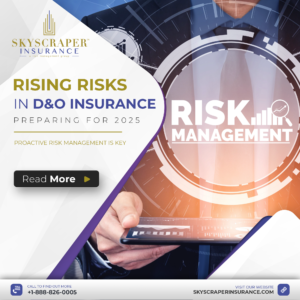With so much that is still unfamiliar, companies have a lot to explore with the metaverse.
In 2023, the metaverse is so much more than digital meeting spaces and games. It provides the potential for businesses to transform the experience of employees and customers, improve processes, and market new products and services. According to a Protiviti-Oxford survey, “Executive Outlook on the Metaverse, 2033 and Beyond,” more than 85% of North American business executives say the metaverse will be “somewhat” or “extremely important” to their business’ future success. However, as the metaverse unlocks future business potential, it also carries some emerging risks for consumers and businesses, creating a growing need for insurance coverage.
While the transition to the metaverse – which is still in its infancy – will be gradual, some businesses have already begun assessing the application of technologies like augmented reality (AR) and extended reality (XR). One example is what’s known as digital twins, which is a virtual model of a process, product, or service. These are virtual representations of physical objects, systems or processes that can be effective for insurers to use in order to run cost-effective simulations, collect data to drive automation and increase efficiency with decision-making. This is significant because it is important for companies to begin to experiment with these technologies in small, incremental steps over time. Companies do not want to fall behind their competitors in the digital space as technology evolves. With AR, XR or digital twins, companies can experiment with what works best for them since not all technologies will be necessary for their business.
One area that businesses may be interested in testing virtual technology is employee training. For example, augmented reality glasses – which provide a virtual overlay on top of a physical device with step-by-step instructions – can reduce training time, costs, and risks, while increasing employee engagement and safety awareness.
Emerging metaverse risks
As virtual real estate, digital assets and personal avatars (a graphical representation of a user or the user’s character or persona) expand, new risks are emerging for businesses, technology developers and insurers. Risks to consider include liability, data security and privacy issues. In the Protiviti survey, 42% of business executives polled said privacy and security risks were the primary roadblocks to implementing their metaverse strategy. This makes it critical for business to not only think through the return on investment from the new technology, but also understand the risks. Some top risks to consider include:
Phishing and scams
As consumers and businesses navigate the growing world of virtual avatars, new types of scams – including 3D social engineering and phishing – have emerged. With AI technology, it is easier to mimic how people write or speak. For instance, some scammers have created 3D avatars to impersonate co-workers or clients. This is done to get targets to share sensitive information and access.
Digital asset ownership
Digital asset ownership, like property or brands, presents another risk factor for businesses and insurers to address. Typically, a business might have general liability insurance for property damage, a policy for bodily injury to third parties, property coverage for physical damage to owned property, and additional cyber insurance for data network infrastructure liability. In the metaverse, those needs are merging, presenting new challenges for the insurance industry. Digital assets, like intellectual property and brands, can be vandalized, hacked, defrauded, or stolen in the metaverse.
Revenue streams augmented by AI can also be disrupted by loss of data or connectivity. This in turn creates a business continuity risk. It is important to monitor digital risk as the adoption rate of these technologies increases because there could be increased system outages, computer glitches, and technology security breaches.
Considering risks and opportunities
Businesses and consumers are not the only ones that should consider the risks of the metaverse. Software companies and start-ups developing these technologies should also be aware of the risks. Failure for technology to deliver on a client’s expectations can create a professional liability risk. It is essential that the companies selling the products and the businesses buying the products understand what the technology is going to deliver and the return on investment.
Despite challenges , insurers like The Hartford remain optimistic about the metaverse’s future. It has the ability to aide research and development testing on large-scale projects – like a power plant safety scenario – which is easier, safer, and less expensive in a virtual environment than live.
Insurance for the metaverse
With so much that is still unfamiliar though, companies have a lot to explore with the metaverse. While it is advantageous to be open to this new technology, it would be wise to be cautious with its implementation.
Insurance has general liability that covers property damage and bodily injury, as well as property coverage for physical damage and cyber policies for intangible things, which are typically three separate policies. However, with the metaverse, insurance carriers have to contend with a world where these three distinct coverages are merging. Businesses must understand that there is a lot that insurance carriers still need to explore in the digital space. In addition, as companies consider integrating the metaverse and its new technology, it would be practical for business leaders to be cautious to ensure decisions are well-informed in order to help protect their company from risks.
Andrew Zarkowsky is Technology Industry Practice Leader for The Hartford. He has more than two decades of experience in insurance, holding various leadership roles in underwriting.
Michael Kearney is Head of Emerging Technology & Innovation for The Hartford. He has more than 30 years in technology roles as a software engineer, CIO, and management consultant.




